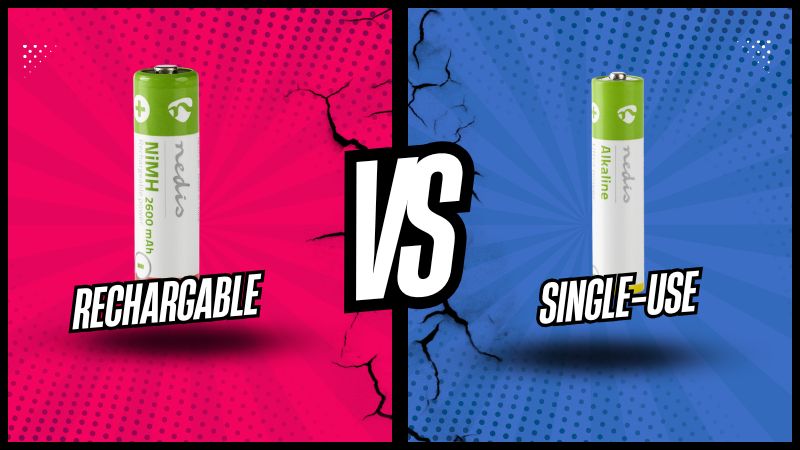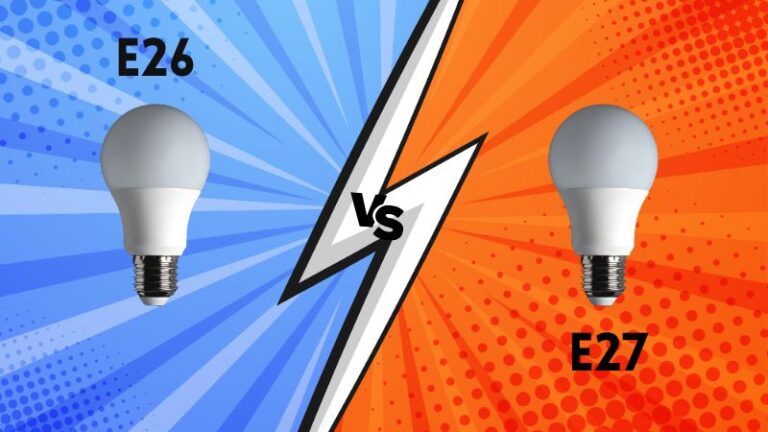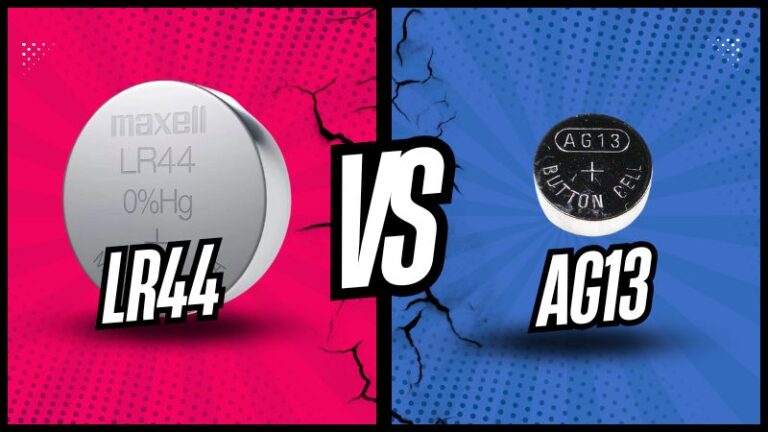As the demand for portable energy sources continues to rise, consumers face a crucial decision when it comes to powering their devices: rechargeable batteries or single-use batteries. Both types of batteries serve the same fundamental purpose of providing energy, yet they differ significantly in design, usage, and environmental impact. Rechargeable batteries, designed for multiple cycles of use, offer the advantage of being reused, which can lead to cost savings and reduced waste over time. In contrast, single-use batteries, also known as disposable batteries, are intended for one-time use and are discarded after their energy is depleted. This comparison will explore the environmental implications of both battery types, considering factors such as resource extraction, manufacturing processes, and end-of-life disposal. By understanding the differences between rechargeable and single-use batteries, consumers can make informed choices that align with their values and contribute to a more sustainable future.
Rechargeable Batteries
Overview of Rechargeable Batteries
Rechargeable batteries are designed to be used multiple times, unlike single-use batteries that are discarded after one use. They typically utilize lithium-ion or nickel-metal hydride technology, allowing for efficient energy storage and release. These batteries are commonly used in various applications, from household electronics to electric vehicles. The ability to recharge makes them a more sustainable option, as one rechargeable battery can replace thousands of single-use batteries, significantly reducing waste and the overall carbon footprint associated with battery disposal.
Key Specifications and Features
Rechargeable batteries come with several key specifications that distinguish them from single-use varieties. They generally have a higher initial cost but can be more economical over time due to their longevity. Key features include:
- Voltage: Typically ranging from 1.2V to 3.7V depending on the battery type.
- Capacity: Measured in milliamp hours (mAh), indicating how much energy a battery can store.
- Cycle Life: The number of charge and discharge cycles a battery can undergo before its capacity significantly diminishes.
Pros and Cons of Rechargeable Batteries
Rechargeable batteries offer several advantages. They are generally better for the environment as they reduce the need for single-use batteries, which require more natural resources to produce. However, the production process for rechargeable batteries, particularly lithium-ion types, is energy-intensive and can contribute to significant carbon emissions. Additionally, while single-use batteries may be cheaper per unit, rechargeable batteries can be less expensive per use when considering their multiple uses. On the downside, the extraction of lithium, a key component, is water-intensive and has raised environmental concerns.
Single-Use Batteries
Overview of Single-Use Batteries
Single-use batteries, also known as disposable batteries, are designed for one-time use and are discarded after their energy is depleted. These batteries are commonly found in household items such as remote controls, toys, and flashlights. They are typically less expensive to purchase than rechargeable batteries, making them a convenient option for consumers who need immediate power without the need for recharging. However, their environmental impact is a growing concern, as they contribute to landfill waste and require significant natural resources for production.
Key Specifications and Features
Single-use batteries come in various sizes and chemistries, including alkaline, lithium, and zinc-carbon. They are characterized by their voltage output, typically 1.5 volts for standard alkaline batteries. The energy density of single-use batteries varies, with lithium batteries generally offering higher energy capacity compared to alkaline types. While they are convenient for short-term use, they lack the sustainability of rechargeable alternatives, which can be used multiple times, significantly reducing overall waste.
Pros and Cons of Single-Use Batteries
Single-use batteries have distinct advantages and disadvantages. On the pro side, they are readily available, easy to use, and do not require a charging infrastructure. They are also cheaper per unit, making them an attractive option for consumers needing immediate power. However, the cons include their environmental impact; single-use batteries require more natural resources to produce and contribute to increased waste. Additionally, one rechargeable battery can replace thousands of single-use batteries, highlighting the long-term cost-effectiveness and sustainability of rechargeable options.
Direct Head-to-Head Comparison
Key Differences in Features
When comparing rechargeable and single-use batteries, the most significant feature differences lie in their usability and environmental impact. Rechargeable batteries can be used multiple times, making them a more sustainable option in the long run. In contrast, single-use batteries are designed for one-time use and require more natural resources to produce. This difference in usage leads to a substantial reduction in waste when opting for rechargeable batteries, as one rechargeable unit can replace thousands of single-use batteries, significantly lowering the overall carbon footprint.
Performance Comparison
In terms of performance, rechargeable batteries typically offer a consistent voltage output over their lifespan, which can be advantageous for devices requiring stable power. However, the production of lithium-ion batteries, commonly used in rechargeable options, is energy-intensive and contributes significantly to carbon emissions. A 2021 study indicated that 46% of electric vehicle emissions stem from battery production, highlighting that while rechargeable batteries can be more efficient in use, their production process poses environmental challenges.
Price Analysis
From a financial perspective, single-use batteries are cheaper per unit, making them an attractive option for short-term needs. However, when considering the long-term usage of rechargeable batteries, they can become less expensive per use due to their ability to be recharged multiple times. This cost-effectiveness is further enhanced by the reduction in waste associated with rechargeable options, which can ultimately lead to savings in both disposal costs and environmental impact.
Reliability Assessment
Reliability can vary between the two types of batteries. Rechargeable batteries may experience a decline in capacity over time, while single-use batteries maintain their performance until depletion. However, the environmental impact of single-use batteries, including the extraction of materials and the pollution from production, raises concerns about their long-term reliability from an ecological standpoint. Thus, while both types have their merits, the choice may ultimately depend on the specific application and the user’s values regarding sustainability.
| Feature | Rechargeable Batteries | Single-Use Batteries |
|---|---|---|
| Usability | Multiple uses | Single use |
| Environmental Impact | Lower waste, higher production emissions | Higher resource use, lower production emissions |
| Cost per Use | Lower over time | Higher over time |
| Performance Stability | Consistent voltage output | Maintains performance until depleted |
Use Cases
Who Should Choose Rechargeable Batteries
Rechargeable batteries are an excellent choice for individuals and organizations that prioritize sustainability and long-term cost savings. They are particularly beneficial for frequent users of battery-operated devices, such as photographers, gamers, and outdoor enthusiasts. One rechargeable battery can replace thousands of single-use batteries, significantly reducing waste and the overall carbon footprint associated with battery disposal. This makes them an environmentally friendly option, as they require fewer natural resources to produce over time compared to single-use batteries. However, it’s important to consider that the production of rechargeable batteries, particularly lithium-ion types, can be energy-intensive and contribute to carbon emissions.
Who Should Choose Single-Use Batteries
Single-use batteries may be more suitable for occasional users or those who require batteries for devices that are not frequently used, such as emergency flashlights or remote controls. They are generally cheaper to purchase per unit, making them a convenient option for short-term needs. For users who do not want to deal with the hassle of recharging or maintaining batteries, single-use options provide a straightforward solution. However, it is important to note that while they may be cheaper upfront, they often require more natural resources to produce and contribute to greater environmental waste over time.
FAQ
What are the main differences in compatibility between rechargeable and single-use batteries?
Rechargeable batteries are designed to be reused multiple times, making them compatible with devices that require frequent battery changes. However, not all devices support rechargeable batteries, particularly older models. Single-use batteries, on the other hand, are widely compatible with virtually all devices, as they are the standard type of battery. Before purchasing, check your device’s specifications to ensure compatibility with the type of battery you choose.
How do rechargeable batteries compare to single-use batteries in terms of performance?
Rechargeable batteries typically offer stable voltage output, which can enhance performance in high-drain devices like cameras and gaming controllers. Single-use batteries may provide higher initial voltage but can decline more rapidly under heavy use. For devices that require consistent power, rechargeable batteries often outperform single-use options, especially over time.
What is the longevity of rechargeable batteries compared to single-use batteries?
Rechargeable batteries can last for several years, with most models rated for hundreds to thousands of charge cycles. In contrast, single-use batteries have a limited lifespan, usually lasting until their energy is depleted after a single use. While rechargeable batteries require an upfront investment, their longevity can make them more cost-effective in the long run.
How do the costs of rechargeable batteries compare to single-use batteries?
Initially, rechargeable batteries tend to be more expensive than single-use batteries. However, considering their ability to be recharged and reused multiple times, they can lead to significant savings over time. Single-use batteries may seem cheaper upfront, but their frequent replacement costs can add up quickly, especially for devices that consume power rapidly.
Are there warranties available for rechargeable batteries?
Many manufacturers offer warranties on rechargeable batteries, typically ranging from one to five years, depending on the brand and model. This warranty often covers defects in materials and workmanship. Single-use batteries generally do not come with warranties, as they are designed for one-time use. When purchasing rechargeable batteries, check the warranty details to ensure you’re protected against potential issues.
What safety considerations should I keep in mind when using rechargeable versus single-use batteries?
Both rechargeable and single-use batteries have safety features, but rechargeable batteries may pose risks if not used properly. Overcharging or using incompatible chargers can lead to overheating or leakage. Single-use batteries are generally safer in terms of handling, but they can leak if left in devices for extended periods. Always follow manufacturer guidelines for charging and storage to minimize safety risks.
Conclusion
When choosing between rechargeable batteries and single-use batteries, the decision largely depends on the user’s needs and usage patterns. Rechargeable batteries are ideal for individuals who frequently use devices that require batteries, such as cameras, gaming controllers, and remote controls. They offer long-term cost savings and are more environmentally friendly, as they can be reused multiple times. On the other hand, single-use batteries may be more suitable for occasional use or in devices where battery replacement is infrequent, such as smoke detectors or emergency flashlights. They provide convenience without the need for a charging station. Ultimately, consumers should consider their usage frequency, environmental impact, and budget when making their choice. For those prioritizing sustainability and cost-effectiveness, rechargeable batteries are the better option, while single-use batteries may be preferred for their simplicity and immediate availability in low-demand situations.




